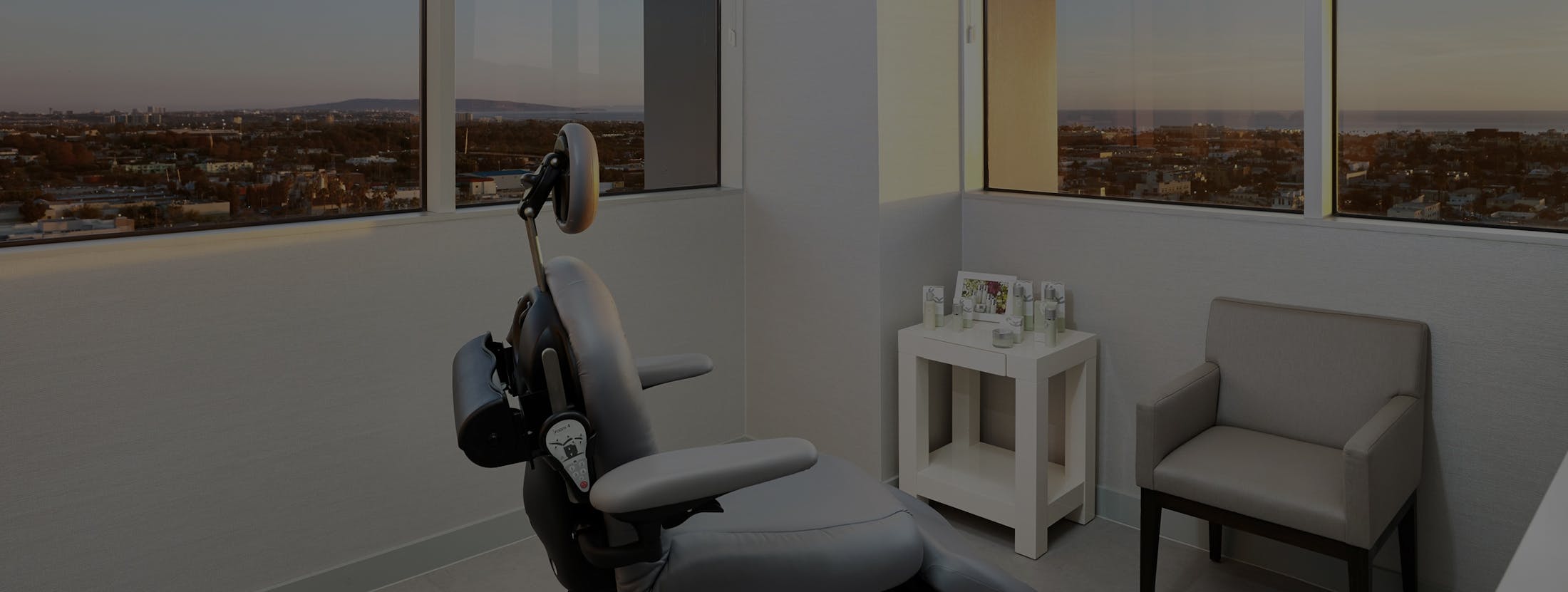
Doctor Karyn Grossman was recently featured on Goop, lending her expertise on skincare, aging and anti-aging treatments. Contact Grossman Dermatology to schedule a consultation with Dr. Grossman.
From Goop.com:
With cosmetic dermatology clinics in both New York and Los Angeles and 20 years of experience at her back, Dr. Karyn Grossman is on a lot of people’s speed dial (including our own). Naturopaths, look away: She specializes in non-surgical facelifts and a host of other treatments like fat freezing and Thermage. “My focus is on making people look natural and refreshed through subtle change,” she explains. “People will think you look great, but can’t put their finger on exactly why.”
Below, Dr. Grossman takes us through her recommendations for every decade. “Ask around and make sure you and your doctor have a similar aesthetic and understanding of what you’d like to achieve,” she cautions. “It’s also important to see a board-certified doctor in either dermatology, plastics, or facial plastics.”
WHEN YOU’RE IN YOUR 20’S
“Skincare should be your main focus. Stay out of the sun, to the extent that you should never get a suntan. Use a combination of sunscreen and antioxidants, which protects against UV Rays, pollution, and dehydration. Antioxidants combat free radicals, which break down the skin’s DNA and damage it, paving the way for fine lines and wrinkles.”
“Many people in their 20’s also want to be more proactive in preventing aging. Forma treatments, a form of radiofrequency, helps to stimulate collagen. Many patients do this 2-3 times a year as a “supercharged” facial. Also, light Fraxel treatments, such as Clear and Brilliant can help to keep pore size to a minimum as well as to decrease brown spots that may be forming.”
WHEN YOU’RE IN YOUR 30’S
“In your 30’s (especially late 30’s) I suggest starting to use Thermage, which looks and feels like a laser but uses heat instead of light to stimulate collagen production in your skin. My philosophy is to hold people in time and slow the progression of aging, making small changes gradually. I typically recommend that people receive these treatments anywhere from twice a year to once every two years depending on how they are aging. I use it on clients to clean and snug up the eyelids and eyebrows, the nasal folds, the jawline, and the neck area. It should feel hot, but tolerable. At the end of the session, you might experience some pinkness for a few hours. This is a ‘day before the red carpet’ sort of procedure.”
“The 30’s are also a time to start laser treatments such as IPL and Fraxel. IPL reduces red on the face, helps to treat rosacea, and can decrease those broken blood vessels around your nose and on your cheeks. It also does a great job of reducing the red/brown sun damage along the sides of the neck and in the décolletage area. Fraxel can be used to brighten the skin, and improve texture, pores, and very fine lines. It may also be helpful in the treatment of melasma, stretch marks, and acne scars.”
WHEN YOU’RE IN YOUR LATE 30’S & 40’S
“Fillers are products that are injected into the skin and occupy space—in other words, they lift and fill the skin. I tend to use different fillers for different areas, though this is all based on the patient and what’s happening on his or her face. It’s not unusual for someone to have three different kinds of fillers in different areas at the same time.”
Whenever you’re having injections in your face, there’s always the risk of bruising, so this is definitely not a ‘day before a public appearance’ sort of procedure. Give yourself at least a week or two before any major event.”
“Here’s an example of the kind of fillers I might use in my practice, keeping in mind that I work on a case by case basis and that I take a totally tailored approach to each patient.”
Under Eyes: Restylane
Forehead and upper lip line: Belotero
Cheeks: Radiesse or Voluma or Sculptra
Lips: Juvederm
“In the US there are several kinds of fillers both permanent and temporary that are on the market.”
TEMPORARY
Hyaluronic Acid
“Hyaluronic Acid is a sugar that is found naturally in soft connective tissues, in joints, and in the skin. These last six to 10 months and the nice thing is that they’re reversible. A few brands are Juvederm, Voluma, Belotero, and Restylane.”
Calcium Hydroxylapatite
“This substance is found in human bones and works underneath the skin to fill in hollow cheeks and temples. While it’s not a permanent procedure, it’s also non-reversible. The brand is Radiesse.”
PERMANENT
Fat
“You can use fat from an area where you don’t want it, and use it on an area where you do. Fat can be used all over the face to volumize, restore the fat you have lost, and to fill in hollowness. It is best used in the temples, cheekbones, cheek hollows, nasolabial folds, chin, and jawline. It is not used for filling in fine lines or “spackling” such as forehead lines, glabellar lines, etc.”
Polylactic Acid
“This is a permanent filler that stimulates your own collagen production. The change is gradual, requires multiple treatments, and doesn’t show for several months. A good rule of thumb is one treatment vial per decade. Sculptra is used for temple and cheek and chin hollows. It is not as good for building up jaw lines or cheekbones.”
PMMA
“This is appealing to patients because you only have to have it done once or twice, and then you’re done (it’s 100 percent permanent), but it’s non-reversible and the change can be unpredictable. There are also a greater amount of complications with these types of permanent fillers, so I often caution those who are interested. The brand is called Bellafill.”
Botox
“Botox gets a bad rep because it comes from botulinum toxin, which is a poison that can cause botulism poisoning. It’s a muscle paralyzer that, if ingested in high doses, can be lethal. On the other hand, it has been used in medicine for over 20 years with minimal systemic side-effects. It’s all about the dosage and the placement of the product. It’s important that you see someone who is experienced and skilled to avoid things such as a droopy eye, a crooked smile, etc.”
“For patients looking to reduce the appearance of mild to moderate wrinkles, I recommend having it injected about once a year and in very small doses. When people overdo it, it gives them a frozen appearance. I use teeny bits so people can’t even tell you’ve had it done—that way, you can still move your face though maybe not create the deep furrows that you could before.”
WHEN YOU’RE IN YOUR 40’S & 50’S
“This is when fillers and IPL photofacials come into play. This is also a great time to add Active Fx to your routine. This is a fractionated CO2 laser that removes small bits of the skin while leaving normal bridges of skin in between. This allows for a much quicker healing process, and can dramatically improve brown spots, wrinkles, crepe-y eyelids, necks, chests, arms, hands, and even backs.”
WHEN YOU’RE IN YOUR 60’S & 70’S
“If you’re looking to get rid of wrinkles without going under the knife, the most aggressive non-surgical procedures I would recommend would be a combination of fat fillers and the CO2 Laser. There is some downtime to the treatment, but if you have moderate to severe sun damage you can get a dramatic improvement in the way you look.”



